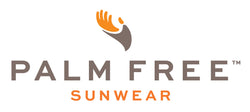Who's at Risk for Skin Cancer? Pt. 3
There are several factors one must consider knowing their susceptibility or risk for skin cancer. In general, anyone with skin can get skin cancer, even animals get skin cancer like humans. However, knowing your skin type, family history, and personal history of UV exposure and the time you currently spend in the sun will help you be more aware of your skin cancer risk. The only modifiable risk factor is using sun protection during the time you currently spend outside now.

All of the above are at risk, one is at greater risk than others.
ID 103451449© Ammentorp | Dreamstime.com
In dermatology we use the Fitzpatrick skin type scale guide to assess the color of one’s skin. Basically, the fairer (redhead with blue eyes and freckles), the higher the risk, the darker the skin tone the lower the risk, however darker skin individuals can and do get skin cancer just not to the extent as fair skin individuals.

Find your skin type to help understand your risk of skin cancer.
Family history matters. If you have a first degree relative with a history of skin cancer, for example, your parents, siblings, or children, you too are at risk. Knowing who had skin cancer and the type is valuable information you should be sharing with your healthcare provider. Knowing if your parents or siblings have a lot of moles is also important. Although most melanomas develop on skin without moles, 20-30% of melanomas can develop within existing moles.
Your personal history of sun exposure is cumulative and important. According to the Skin Cancer Foundation, a history of 5 sunburns during childhood or adolescence doubles your risk for melanoma later in life. And, if you have a history of indoor tanning, you have an 83% increased risk of developing squamous cell carcinoma and 29% increased risk of developing basal cell carcinoma. The more indoor tanning exposure, the higher the risk of developing melanoma.

This is a VERY BAD IDEA!
ID 4209087 | Dreamstime.com
One of the healthiest things you can do for your mental, physical and social health is to have a sporting activity. However, spending hours outside without proper sun protection will take its toll in the form of skin thinning, brown spots, precancers, and the most common skin cancers such as squamous cell and basal cell carcinoma and melanoma. These tend to show up on the head and neck, ears, arms, hands, and upper chest; the areas most exposed during common outdoor activities such as fishing, golfing, tennis, pickleball, surfing, hiking, and running. If you are a bicyclist, your legs may also develop skin cancers.
Outdoor activities also contribute to skin cancers and our risk increases as we age.
ID 150301500© Stefan Dahl | Dreamstime.com
If your sun damage was ‘already done’ early in life, your risk increases even more. As we age our immune system decreases and being in the sun suppresses our skin’s immune system, further increasing your risk of skin cancers.
You can’t change the past, but you can act now to do your best to try to lower your risk by wearing sun protective clothing regularly during your outdoor activities. Use SPF30 plus sunscreens like CeraVe or Aveeno Positively mineral, protect your hands and keep your grip by wearing UPF50 PalmFreeTMSunGloves; great for golf, tennis, pickleball, fishing, hiking and running. NeckBlock provides UPF50 sun protection for the neck and chest when wearing polos while playing golf. UPF50 clothing offered by BloqUV provides excellent UVR protection. And of course, don’t forget your wide brim hat! Sunday Afternoon Hats have a wide variety of sun hats for just about any outdoor activity.






